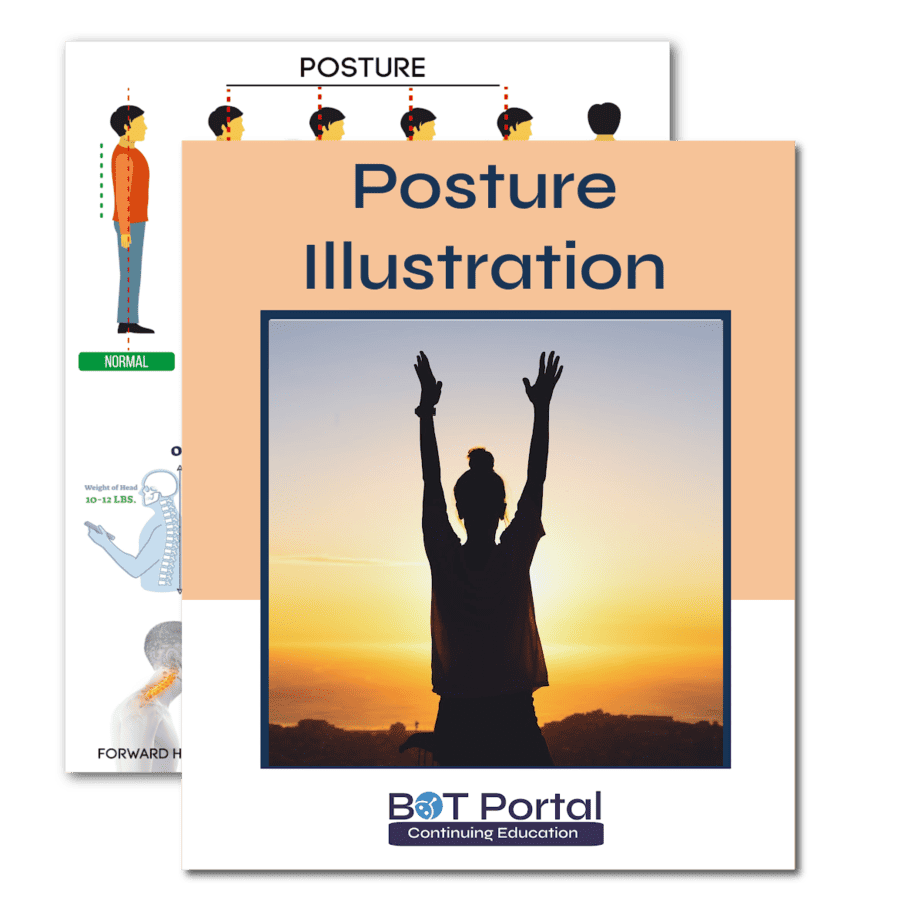Description
Posture Illustration
Note: This posture illustration is an idea to inform daily practice. Many research-supported intervention trajectories are shown to promote remediation, and everyone is different! Do your research! This is merely a tool in your toolkit. 🙂
In occupational therapy, educating individuals on posture positions and the impact of “text neck” is essential for optimizing occupational performance and promoting overall well-being, particularly in an era where technology use is pervasive. Posture plays a significant role in occupational performance, influencing comfort, efficiency, and long-term musculoskeletal health during various activities such as desk work, studying, or using electronic devices. By understanding the importance of posture awareness and the consequences of poor posture habits, individuals can improve their ability to engage in activities safely, comfortably, and effectively.
The single-page resource illustrating posture positions and “text neck” serves as a valuable educational tool for occupational therapy practitioners and their clients. It highlights common posture positions observed in daily life, such as sitting at a desk, using a computer, or texting on a smartphone, and contrasts them with ideal ergonomic postures recommended for optimal comfort and alignment. Additionally, the illustration depicts the detrimental effects of “text neck,” a term used to describe the strain and discomfort resulting from prolonged periods of forward head posture while using electronic devices.
Occupational therapy emphasizes the importance of posture education in occupational performance, as poor posture habits can contribute to a range of musculoskeletal issues, including neck pain, shoulder tension, and back discomfort. By raising awareness of proper posture alignment and ergonomic principles, occupational therapists empower individuals to make informed choices and implement adaptive strategies to support their occupational goals and prevent long-term health problems associated with poor posture.
For example, an office worker experiencing neck and shoulder pain due to prolonged hours of computer use may benefit from posture education and ergonomic interventions recommended by their occupational therapist. By learning how to adjust their workstation setup, practice good posture habits, and incorporate regular breaks and stretching exercises into their routine, the individual can alleviate discomfort, improve productivity, and maintain occupational performance over time.
Ultimately, educating individuals on posture positions and the consequences of “text neck” empowers them to take proactive steps to protect their musculoskeletal health and enhance their occupational performance. Through targeted education, personalized interventions, and ongoing support, occupational therapy enables individuals to adopt healthy posture habits, reduce the risk of injury, and optimize their overall well-being during daily activities and tasks.
Some other helpful resources:
Check out BOT Portal: Resource Site for Occupational Therapy Students and Practitioners




